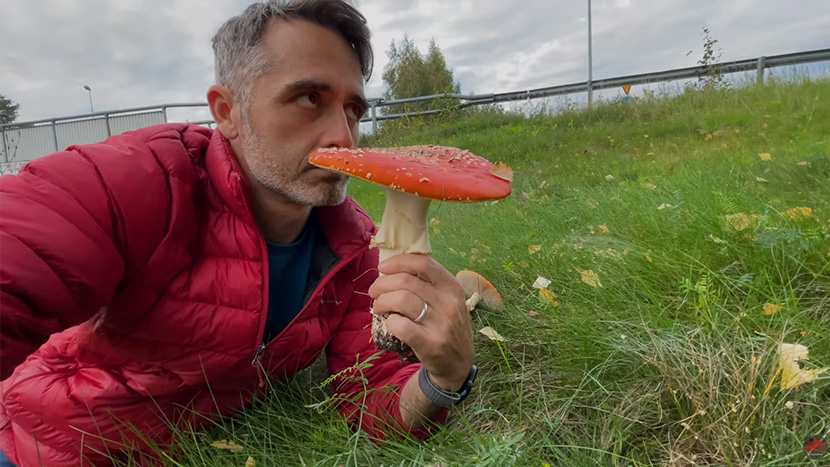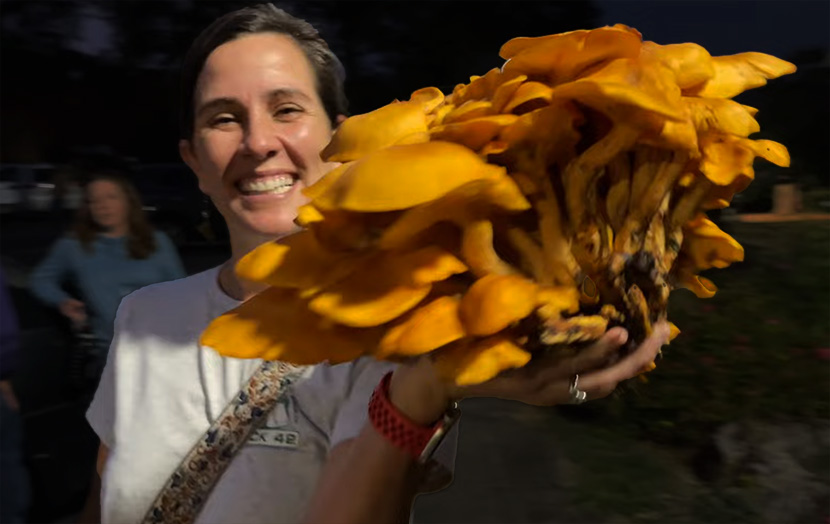Can you Touch Toxic Mushrooms?
When you go out to the woods, what is it that you are afraid of? While you might be thinking about something like bears and mountain lions, there is something else that gives many people quite the fright. Something a bit smaller, much quieter, and largely misunderstood: mushrooms!
Mycophobia, the fear of mushrooms, has led to a lot of incorrect myths about fungi in general. One of these myths is that you should not touch toxic mushrooms, but what is the truth? And are there exceptions?

Handling Mushrooms
There are plenty of beneficial mushrooms and a decent number of deadly mushrooms, so knowing how to identify mushrooms with utmost certainty is important if you plan on eating them. That being said, an often important part of identification has to do with handling the mushroom.
Most of us probably grew up being told to never touch mushrooms at all, and you will still hear this today, but this really isn’t the case. Now, even though respectful caution towards new things is always a good idea in nature, mycophobia leads to an over exaggeration when it comes to fungi. If you do a quick internet search, you will see claims of mushrooms causing illness from simply touching them. Actually, when I ventured onto the internet to get more perspectives for this piece the very first search result talked about a mushroom that will kill you even if you touch it… this is totally false and honestly quite frustrating.
If you talk to a mushroom expert, the most likely viewpoint is that you can and should touch most mushrooms if you are observing them. There are currently no official records of people getting mushroom poisoning from simply handling mushrooms. The exceptions are for a few mushrooms that might cause a rash, but generally this is due to an allergy and not a general rule across the board – more on this in a moment.
Why You Should Touch Mushrooms
Experiencing nature to the fullest is about using all of your senses. Though you always have to be careful in your environment, making sure you avoid poison ivy for example, physically touching the things we are learning about is a big part of how we learn.
In terms of fungi, picking, smelling, and touching a mushroom can be crucial for identification. Mushroom color and shape alone doesn’t always help you identify it ,and mushroom color for example is not an indicator for toxicity. That being said, don’t pick and manipulate every single mushroom you see. This way you can reduce your impact on the environment and also leave some for others.

Mushroom Poisoning
As much as we want to dispel myths and give people confidence outdoors, it is important to remind everyone that there are mushrooms that can make you sick, and some that can kill you. From gastrointestinal distress to kidney damage and even death, there is a range of mushroom poisoning that can occur from consuming mushrooms. Compounds from ibotenic acid to amatoxins can cause quite terrible symptoms, from a bad stomach day to liver and kidney failure.
This is probably why people are concerned about touching toxic mushrooms. However, as mentioned earlier, you will not get mushroom poisoning from touching mushrooms alone!
Touching Poisonous Mushrooms ≠ Mushroom Poisoning
In general, handling toxic mushrooms is safe, with a few rare exceptions. The majority of toxins found in mushrooms are not able to absorb through the skin. Furthermore, the few toxins found in mushrooms that in theory are able to absorb through the skin are not found in high enough concentrations or pure enough forms to cause any kind of damage. Long story short, these compounds have to be ingested and introduced to the bloodstream to take effect on us.
Though the internet is rich with stories of people who believe to have been poisoned from handling mushrooms, there are no official reports on poisoning from handling mushrooms and the majority of experts will back this up.
Even some highly toxic mushrooms like the glowing Jack O’ Lantern Mushroom can be safely handled and smelled. The toxins here are quite harmful, but also being studied as a cancer treatment!
If it helps you feel better, washing your hands after handling mushrooms and making sure to not mix toxic mushrooms with your edible ones can further avoid any potential issues.
So, Why Do People Think That You Shouldn’t Touch Mushrooms?
Myths and misinformation come from all kinds of sources, but here are some ideas about why people are scared to touch mushrooms:
First, some of the confusion probably comes from the fact that you can get rashes and other dermatological reactions from eating toxic mushrooms or uncooked mushrooms. That’s right, you can actually get bad reactions, including rashes, from eating uncooked mushrooms that are normally safe to eat, this is why you should always cook foraged mushrooms. When this happens, people might associate rashes with touching toxic mushrooms, when really the rash is caused from eating them.
Second, the media. Ah the media is here again to make us afraid of something we shouldn’t be. A great example of sensationalist media creating this confusion is related to the fire coral fungus (Podostroma cornu-damae). This mushroom is very deadly mushroom (when eaten) from Asia that started popping up in Australia and the media ran away with it. Anecdotally, fire coral fungus may cause a rash when touched, but touching it will not have the same effects as eating it. In this case, a mycologist mentioned to reporters that some of the trichothecenes found in this fungus are known to be able to pass through the skin, but what they missed is that this has never actually happened with mushrooms. This blog breaks down the sensationalism of this specific case very well.
In saying all this, some people are allergic to certain mushrooms and can have a small reaction.
The exceptions
1. Like anything else in nature – be it everyday food, plants, insect bites, etc. – some people can be allergic to certain mushrooms and therefore develop a reaction that others won’t. That being said, symptoms tend to be like in this case study: a minor rash that is unlikely to become severe and will go away on its own without treatment. If you think about it, there are people who can’t even be in the same room as shellfish without having a potentially fatal allergic reaction! So this just simply reminds us that there is an exception to everything!
As a note, in North America rashes are reported more often for Suillus sp., for people with sensitive skin.
2. Similarly to any outdoor activity, do be extra careful handling mushrooms if you have any open wounds.
3. In terms of smelling mushrooms, most experts only warn people to be careful if they are immunocompromised.

Conclusion
In short, touching toxic mushrooms is not going to give you mushroom poisoning of any kind. Though some individuals may experience rashes due to an allergic reaction, there is no proof that toxins found in toxic mushrooms can enter our system through the skin. Though we need to respect and be cautious around mushrooms, there is no need to fear them. That being said, if you want to forage mushrooms for eating, make sure you have worked with a local mushroom guide to confidently identify the mushrooms in your area!
Want to grab some more mushroom facts? Check out more mushroom mythbusting:
Note: This page is meant to be informational and is not meant to give medical advice. Use caution when exploring in nature and stay safe!

